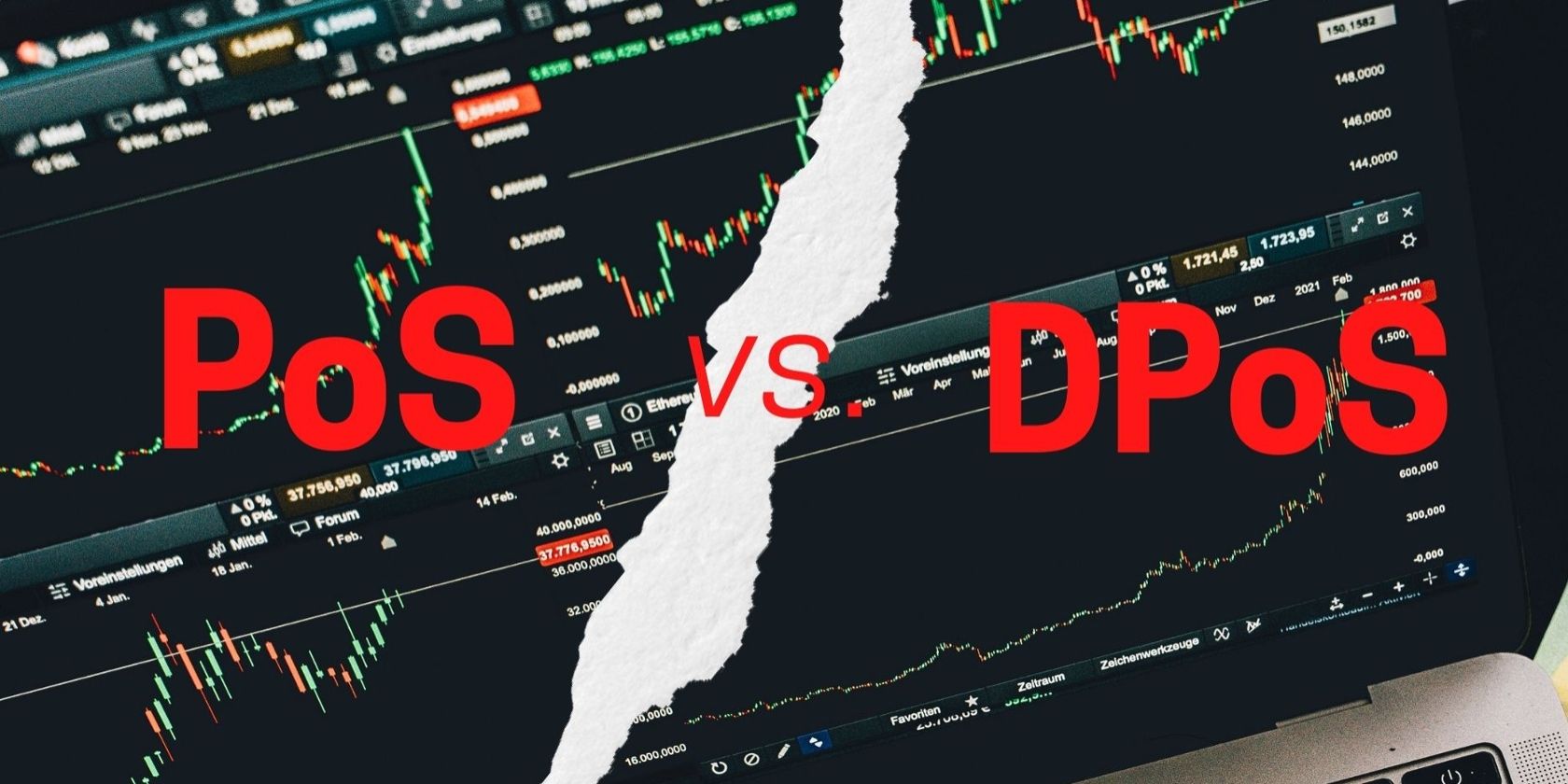Staking is an excellent way for crypto owners to keep decentralized platforms secure while getting rewarded in return. It has become hugely popular in recent years, but it’s not just done using the Proof of Stake (PoS) mechanism.
An additional mechanism, known as Delegated Proof of Stake (DPoS), can also be used in this process. But what exactly is Delegated Proof of Stake, and how different is it from Proof of Stake?
Proof of Stake vs. Delegated Proof of Stake
Proof of Stake is a consensus mechanism developed and widely adopted as a more energy-efficient alternative to the Proof of Work mechanism. Many decentralized platforms today use the Proof of Stake mechanism centered around validation.
This mechanism allows decentralized platforms to stay secure by validating each block within the blockchain. Each block contains multiple blockchain transactions, and so this validation process ensures all transactions are above board and not altered in any way.
Proof of Stake is achieved using validators: individuals who process and create new blocks by staking a considerable amount of a specific crypto token. They use their staked funds to vote on the legitimacy of blocks through a process that allows validators to reach a consensus.
Validators are then rewarded monetarily by their chosen platform in the form of whichever token they initially staked.
On the other hand, Delegated Proof of Stake (DPoS) is a modification of the Proof of Stake consensus mechanism and was first introduced in 2015 via crypto exchange BitShares, after being developed by Daniel Larimer a year before.
Several platforms offer DPoS nowadays, though it still isn’t as popular as PoS. Delegated Proof of Stake involves users voting for delegates to validate the next block on a blockchain by pooling funds into a staking pool, which are then linked to the user they vote for if they become a delegate.
This involves a voting system where crypto stakeholders pass their work onto a third party, securing the network on their behalf. These third-party validators are also known as witnesses or block producers. In short, this mechanism encourages and incentivizes users to further secure the network.
According to the PoS mechanism, anyone can be a validator if they have the minimum staking amount and sufficient computer RAM. But a user can only become a validator via the DPoS mechanism if they are voted for.
If one user stakes more crypto than another, the former will have more voting power with Delegated Proof of Stake. When a user votes for a delegate, they’re basically voting to assign their staked funds to them for validating and creating new blocks.
So, the user’s rewards then depend on how many blocks the delegate validates or creates. Whatever rewards the delegate acquires is usually split between those users who voted for them. But not just anyone can become a delegate. Prospective delegates must offer a proposal for why they should be voted for, as a prospective parachain slot would in a DOT slot auction.
So, now that we know the differences between the two mechanisms, let’s discuss which is better.
Which Is Better: PoS or DPoS?
Though Proof of Stake is currently the most popular consensus mechanism among big exchanges, Delegated Proof of Stake is set to be the next step up. This is for a couple of reasons.
Firstly, Delegated Proof of Stake is generally faster than Proof of Stake, with the ability to process more transactions per second. Secondly, DPoS is far more democratic than PoS, as users can choose who exactly validates and creates new blocks on the platform they use.
On top of this, DPoS is more energy-efficient than PoS and doesn’t require as much hardware. Delegates can also be voted out of a system at any point if they are not carrying out their duties correctly.
So, overall, Delegated Proof of Stake certainly comes out on top, but the Proof of Stake mechanism is still an effective and efficient mechanism, which is why so many platforms use it today.
Consensus Mechanisms Form the Backbone of Blockchain-Based Platforms
Though consensus mechanisms can be confusing, they are essential for keeping decentralized platforms secure and above-board. Whether it’s PoS, DPoS, or PoW, the crypto industry would be a very different landscape without these crucial mechanisms. Who knows what kind of mechanism will take the industry by storm next!
About The Author

